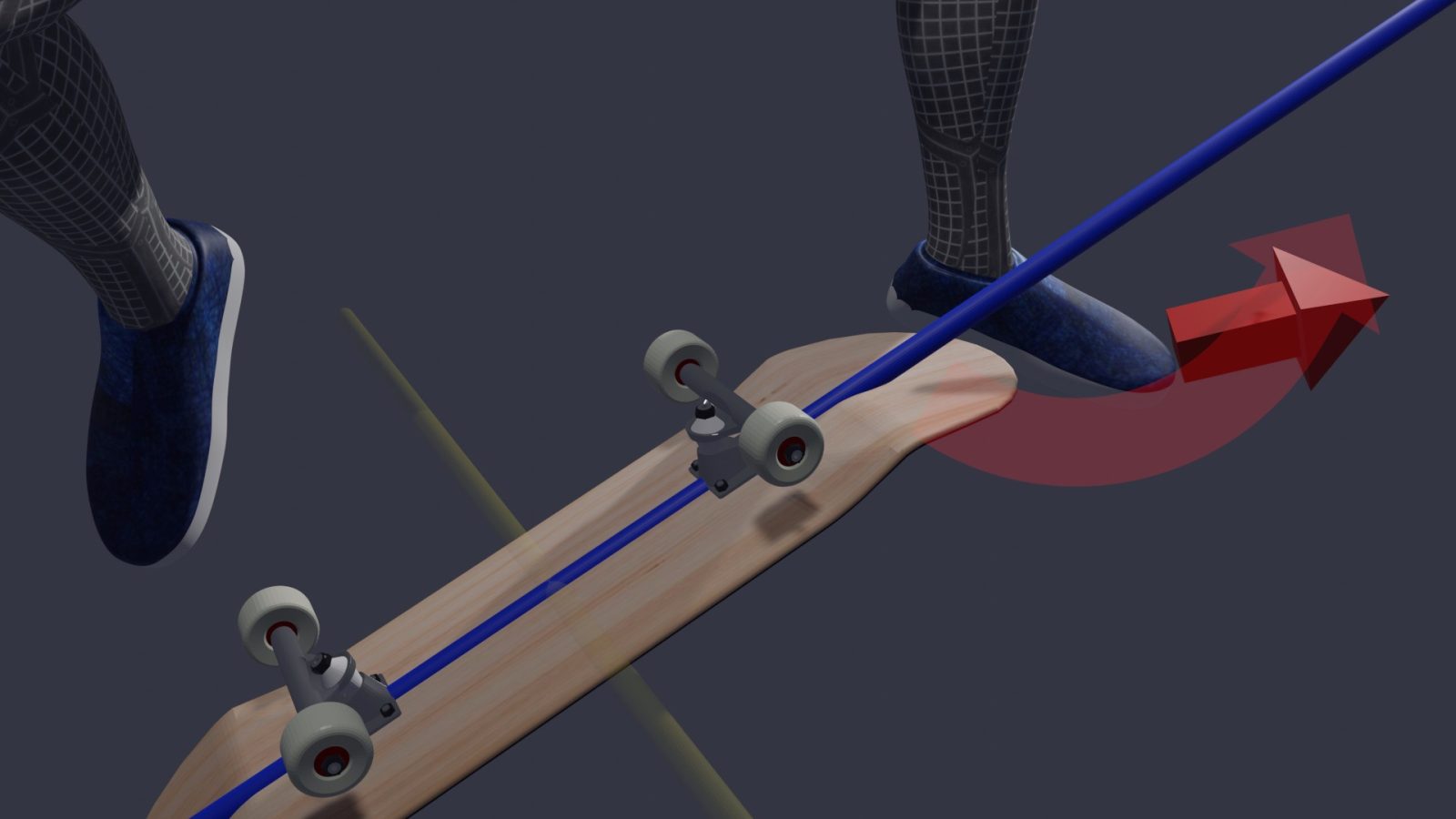Definition
What is the wheelbase to begin with?
The wheelbase refers to the distance between the front and rear wheels, and it has a direct influence on the steering angle.
In skateboarding, the steering angle is defined as the angular difference between the rear and front trucks.
The arrow in GREEN: Direction of the rear truck.
The arrow in BLUE: Direction of the front truck.
The angle in YELLOW: The resulting steering angle.
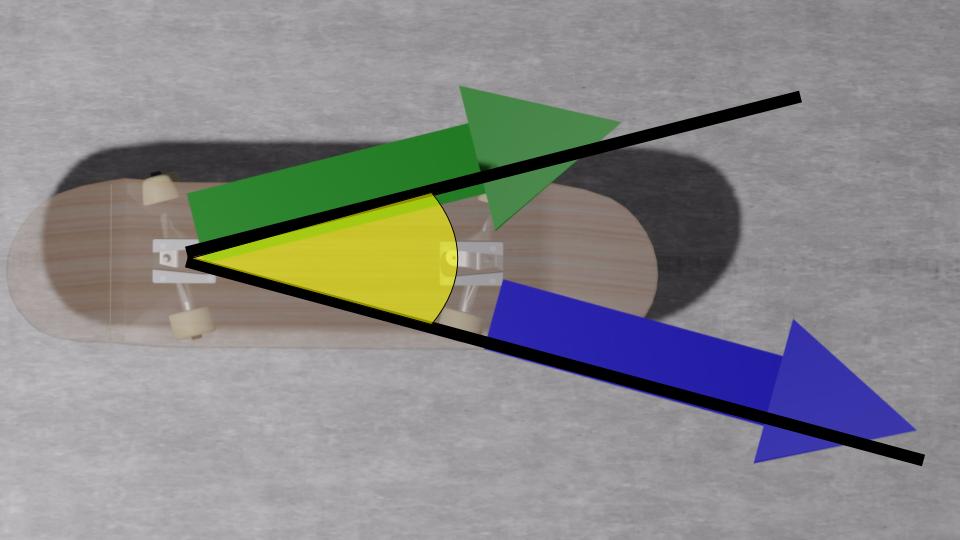
Impact of the Wheelbase on Turning
How does a skateboard turn?
A skateboard turns when pressure is applied to the trucks by bending the ankles or by gently leaning the body in the intended direction of travel.
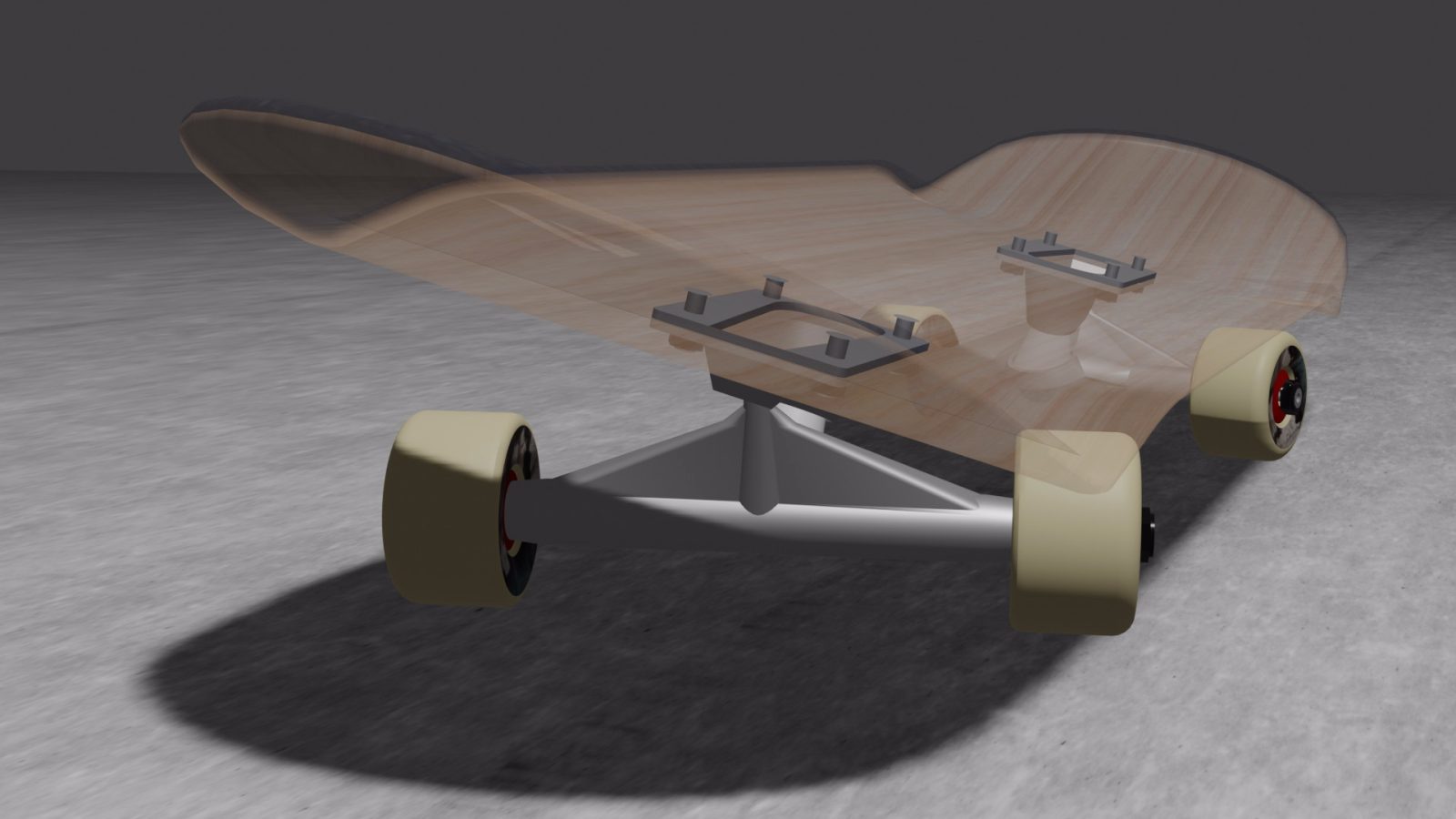
What happens when you press down the trucks?
When the trucks are pressed down, they pivot and face slightly different directions. The front truck aligns with the blue arrow, while the rear truck aligns with the green arrow.
The combined effect of these directional vectors determines the board’s path, which remains roughly parallel to the deck itself.
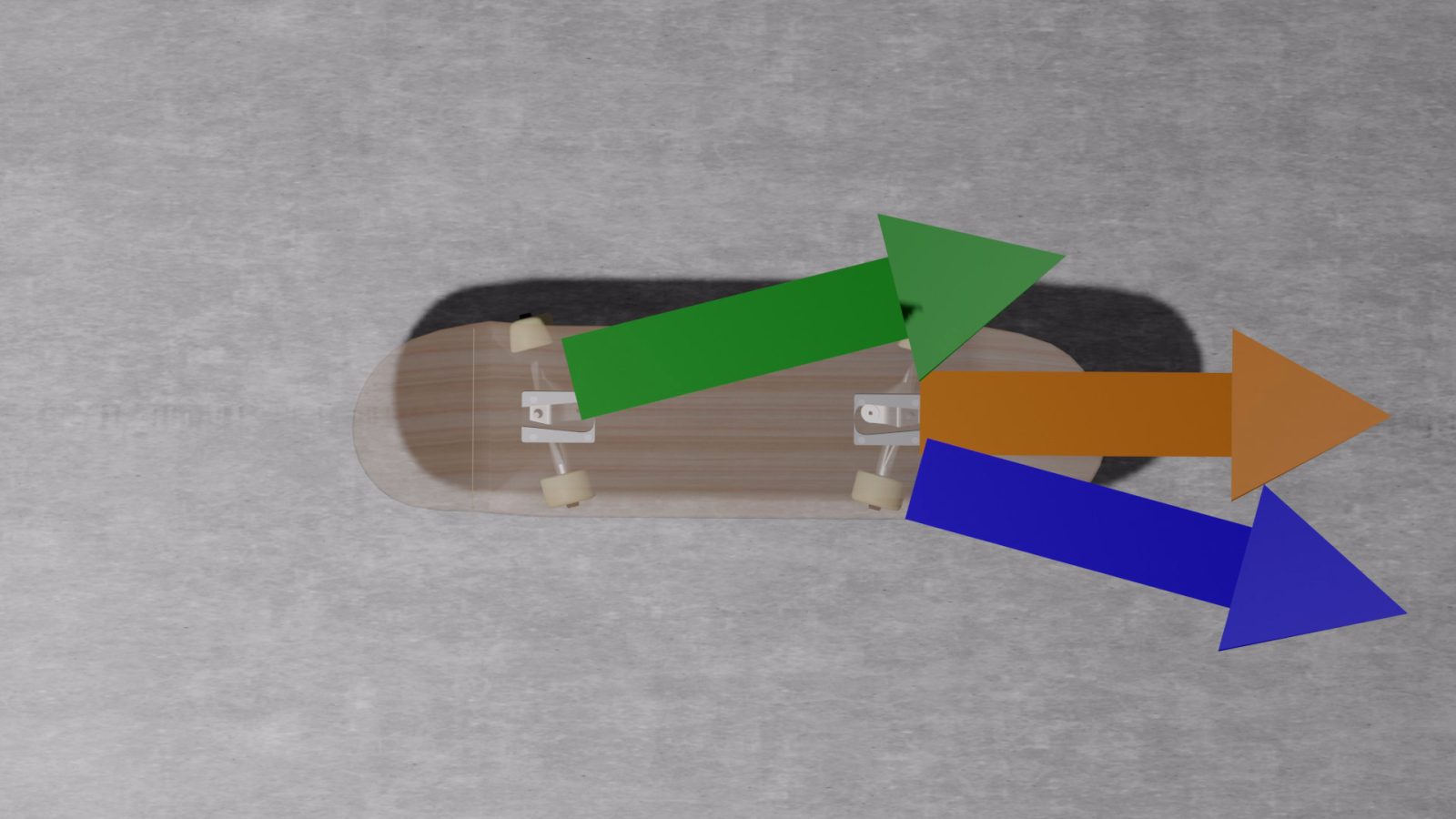
The board has the energy to move forward. So why does it turn?
Although the board carries forward momentum, it turns because the inner and outer wheels travel different distances during a turn.
As illustrated, the inner wheels (yellow line) travel a shorter distance than the outer wheels (red line). This difference in travel distance naturally causes the board to rotate.

Why does a longboard turn more slowly?
On a longboard, the distance difference between the inner and outer wheels has a relatively small effect. Suppose the wheelbase is 100 cm, and pressing the trucks reduces the inner wheels’ path by 10 cm compared with the outer wheels.
In this scenario, the yellow line becomes only 10% shorter than the red line. Such a modest difference produces a minimal influence on the turning radius.
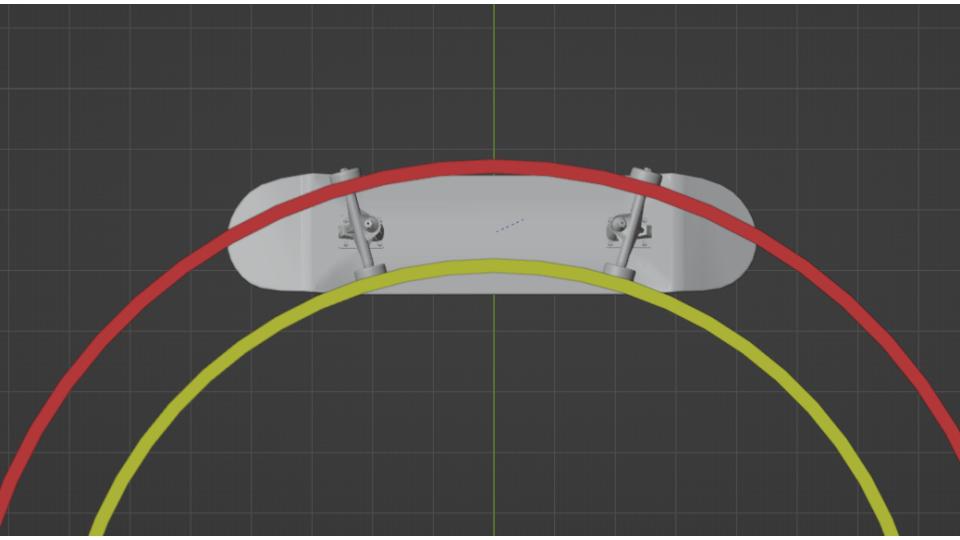
Impact of the wheelbase on a short board
Conversely, when the wheelbase is around 20 cm, the effect on turning becomes substantial. If pressing the trucks reduces the inner wheels’ travel distance by 10 cm, the yellow line becomes roughly half the length of the red line. This creates a noticeably tighter turning radius.

Impact on Pop
Definition, hypothesis, and experimental conditions
We conducted experiments by adjusting the wheelbase while keeping the overall deck length constant. Using a physics simulator, we examined whether a shorter wheelbase results in a lighter pop.
In each test, a 1 kg ball was dropped from a height of 1 meter onto the tail, and the ball ceased movement immediately after the first impact.
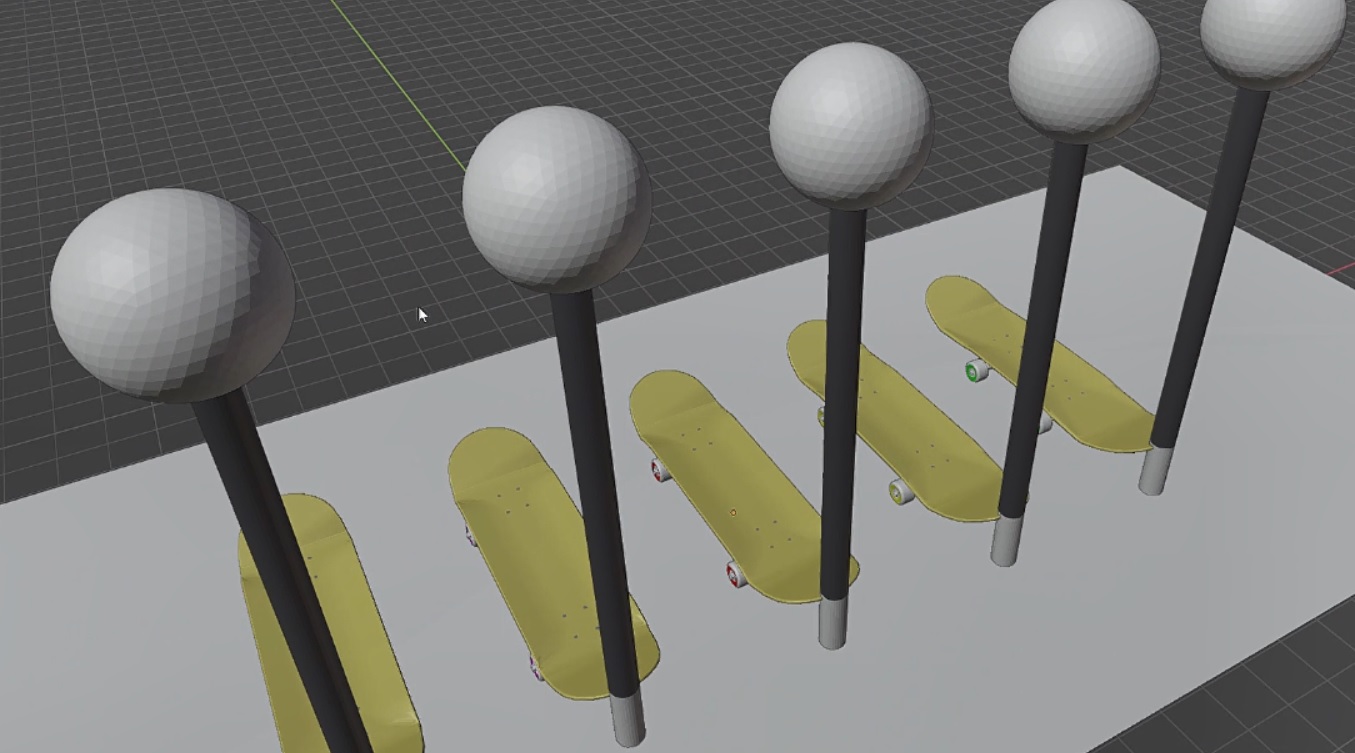
Experimental results
In the trials, the tail with the shortest wheelbase struck the ground, while the tail with the longest wheelbase remained elevated. This confirms the common idea that “a shorter wheelbase gives a lighter pop” is accurate.
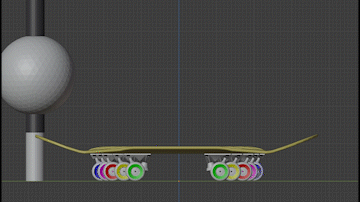
Shorter wheelbase = Smaller angle of pop
We repeated the experiment using heavier (5 kg) balls. Under this condition, all tails made contact with the ground. However, the deck with the shortest wheelbase (lime green) remained comparatively low, while the deck with the widest wheelbase (blue) lifted the highest.
This indicates that a board with a shorter wheelbase can produce more vertical pop, provided sufficient force is applied to the tail.
In this setup, the wheelbase and the distance between the rear truck and the tip of the tail are inversely related: a wider wheelbase shortens that distance, and a narrower wheelbase lengthens it.
In a future analysis, we will conduct experiments without altering the length of the tail.

What Board Should You Choose?
Ultimately, the choice depends on your skating style and personal preference. However, it is helpful to keep in mind that a lower pop can make certain tricks easier.
For instance, as explained in the analysis of the kickflip’s pop, flicking the board can become more difficult when the deck rises at too steep an angle, depending on the timing of the movement.
